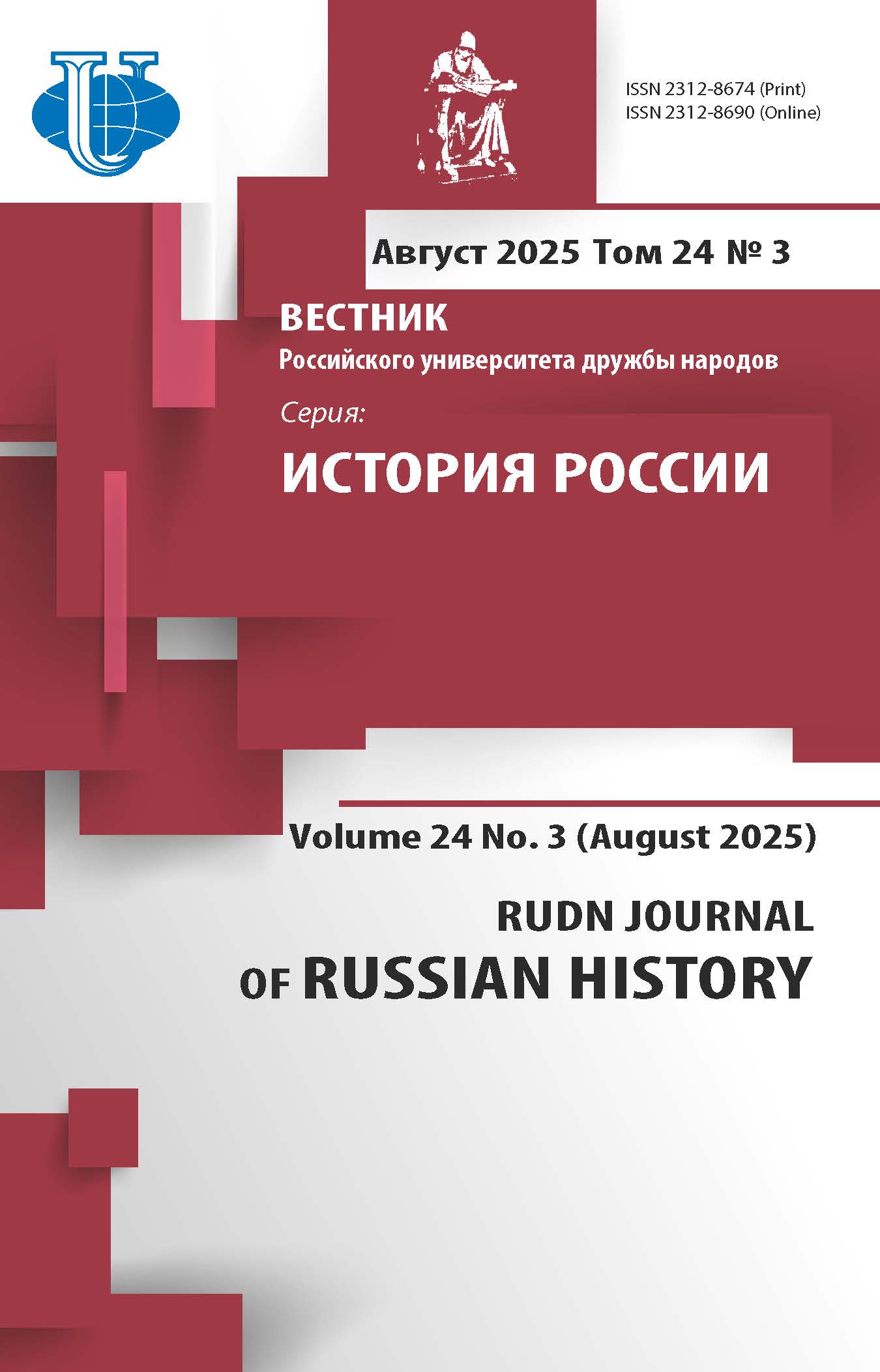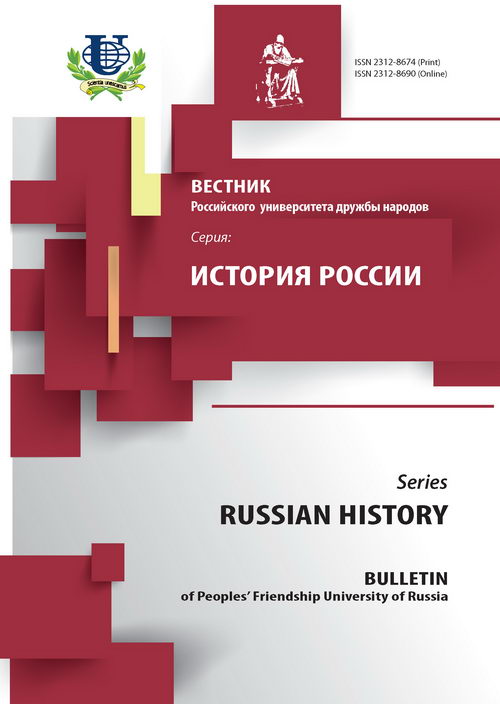Детские дома и трудколонии: жизнь «государственных детей» в Советской России в 1920−1930-е гг.
- Авторы: Смирнова Т.М.1
-
Учреждения:
- Институт российской истории Российской академии наук
- Выпуск: № 3 (2012)
- Страницы: 16-38
- Раздел: СТАТЬИ
- URL: https://journals.rudn.ru/russian-history/article/view/3924
- ID: 3924
Цитировать
Полный текст
Аннотация
На базе широкого круга источников в статье анализируется советский режим воспитания так называемых «государственных детей» (т.е. детей, лишенных родительской опеки и помещенных в детские учреждения закрытого типа) в 1920-1930-х гг. Особое внимание уделено проблемам финансирования и обеспечения детских учреждений различной подведомственности; методам воспитания «морально-дефективных» детей и несовершеннолетних правонарушителей; вопросам подбора воспитательно-педагоги-ческих кадров, а также наличия и действенности контроля их работы со стороны советских и партийных органов.
Об авторах
Татьяна Михайловна Смирнова
Институт российской истории Российской академии наук
Email: tmsmirnova@mail.ru
Центр изучения новейшей истории России и политологии; Институт российской истории Российской академии наук
Список литературы
- Режимные люди в СССР / Отв. ред. Т.С. Кондратьева, А.К. Соколов. - М., 2009.
- Смирнова Т.М. Дети Советской России (по материалам Деткомиссии ВЦИК. 1921-1924 гг.) // Социальная история. Ежегодник 2001/2002. - М., 2003. - С. 486-528.
- Красная Москва, 1917-1920 гг. - М., 1920. - Ст. 452.
- ГАРФ. - Ф. Р-5207. - Оп. 1. - Д. 8. - Л. 14.
- Безрогов В., Иванченко Г. Детское чтение: от начала к концу XX века // НЛО (Независимый филологический журнал). - 2010. - № 102
- Калужская Ю.А. Становление и развитие отечественной педагогики детского чтения в первой трети XX века на примере деятельности Научно-исследовательского института детского чтения. - М., 2004.
- Современный ребенок / Под ред. К.Н. Корнилова и Н.А. Рыбникова. - М., 1923
- Дурново А.С., Радин Е.П. Вопросы педологии в работе Наркомздрава по охране здоровья детей и подростков. - М., 1928
- Дурново А.С. Этапы развития педологии и педагогики раннего детского возраста (в связи с обзором русской литературы за 1917-1927 гг.). - М., 1928
- Шмидт В.Ф. Психоаналитическое воспитание в Советской России: Доклад о Детском доме-лаборатории в Москве. - М., 2011
- Она же. Дневник матери: первый год жизни: Психоаналитические и педагогические труды В.Ф. Шмидт. - М., 2009. - Т. 1
- Она же. Дневник матери. Второй и третий годы жизни: Психоаналитические и педагогические труды В.Ф. Шмидт. - М., 2010. - Т. 2.
- Дурново А.С. Антропометрия в практике врача и педолога. - М., 1928. - С. 5; Антропометрические измерения детей (унификация методики массовых исследований детей и подростков): Сб. ст. / под ред. А.С. Дурново. - М., 1923. - С. 71.
- Радин Е.П. Что делает Советская власть для охраны здоровья детей. - Вятка, 1921. - С. 33-34
- Узданский А.В. Без фундамента не может держаться вершина // Радин Е.П. Узданский А.В. Ко второй годовщине Октябрьской революции. - М., 1919. - С. 20-22.
- Конюс Э.М. Пути развития советской охраны материнства и младенчества (1917-1940). - М., 1954. - С. 123.
- Красная Москва, 1917-1920 гг. - М., 1920. - Ст. 433.
- ГАРФ. - Ф. Р-5207. - Оп. 1. - Д. 1634. - Л. 4.
- Смирнова Т.М. «Лучше вывести и расстрелять»: Советская власть и голодные дети (1917-1923 гг.) // Ежегодник историко-антропологических исследований. 2003. - М., 2003. - С. 226-245
- Она же. Дети лихолетья: Повседневная жизнь советских детдомовцев. 1917 - начало 1920-х гг. // Материнство и детство в России XVIII-XXI вв. - М., 2006.- Ч. I. - С. 255-299.
- ГАРФ. - Ф. Р-5207. - Оп. 1. - Д. 48. - Л. 209.
- Там же. - Д. 34. - Л. 16.
- ГАРФ. - Ф. Р-5207. - Оп. 3. - Д. 19. - Л. 19.
- ГАРФ. - Ф. Р-5207. - Оп. 1. - Д. 1645. - Л. 4.
- Там же. - Л. 55 об.
- Там же. - Л. 46-55.
- Там же. - Оп. 3. - Д. 29. - Л. 13.
- Там же. - Л. 4-5.
- Там же.
- там же. - Д. 1708. - Л. 13-20.
- там же. - Д. 34. - Л. 4-5, 44-45; Д. 1708. - Л. 15, 17-20.
- там же. - Д. 34. - Л. 4-5, 44-45; Д. 1708. - Л. 15, 17-20.
- Там же. - Д. 19. - Л. 8.
- Там же. - Д. 1708. - Л. 13.
- Там же. - Д. 29. - Л. 4-5.
- Смирнова Т.М. Дети Советской России... - С. 486-528.
- ГАРФ. - Ф. Р-5207. - Оп. 1. - Д. 17. - Л. 17 об; Д. 26. - Л. 72; Д. 48. - Л. 33; Д. 82. - Л. 24; Д. 102. - Л. 27
- Смирнова Т.М. «Лучше вывести и расстрелять»... - С. 226-245.
- ГАРФ. - Ф. Р-5207. - Оп. 3. - Д. 19. - Л. 95-94.
- Там же. - Д. 29. - Л. 15 об.
- Там же. - Оп. 1. - Д. 1718. - Л. 2-5, 9.
- Дербуков Н. Плюсы и минусы в детских домах (По данным инспекторского обследования сети детских домов) // Школа и жизнь. - 1926. - № 11. - С. 53.
- ГАРФ. - Ф. Р-5207. - Оп. 1. - Д. 1718. - Л. 2-5, 8, 9.
- Там же. - Оп. 3. - Д. 29.
- Там же. - Д. 8. - Л. 74 об; см. также: Д. 17. - Л. 42; Д. 41. - Л. 11; Д. 48. - Л. 70.
- Там же. - Д. 48. - Л. 13; Д. 70. - Л. 24.
- Смирнова Т.М. «Вычистить с корнем социально-чуждых»: Нагнетание классовой ненависти в конце 1920-х - начале 1930-х гг. и ее влияние на повседневную жизнь советского общества (по материалам «чисток соваппарата» Москвы и Московской области) // Россия в XX веке. Реформы и революция. - М., 2002. - Т. 2. - С. 187-205
- Она же. Чистки соваппарата как часть советской повседневности 1920-1930-х гг. // Вестник РУДН. Сер. «История России». - 2009. - № 3. - С. 103-120.
- ГАРФ. - Ф. Р-5207. - Оп. 3. - Д. 29; Д. 34.
- Там же. - Оп. 3. - Д. 29. - Л. 4-5; Оп. 19. - Л. 107.
- Там же. - Оп. 3. - Д. 29. - Л. 15 об.
- там же. - Д. 29.
- Там же. - Д. 34. - Л. 45.
- Там же. - Д. 29. - Л. 15 об, 22.
- Там же. - Д. 35. - Л. 90-102.
- Смирнова Т.М. Дети Советской России... - С. 486-528.
- ГАРФ. - Ф. Р-5207. - Оп. 1. - Д. 82. - Л. 24.
- Там же. - Оп. 3. - Д. 29. - Л. 4-5.
- Там же. - Оп. 1. - Д. 48. - Л. 12.
- Там же. - Оп. 3. - Д. 35. - Л. 91.
- Там же. - Оп. 1. - Д. 1645. - Л. 62, 94.
- Там же. - Д. 1771. - Л. 117.
Дополнительные файлы















